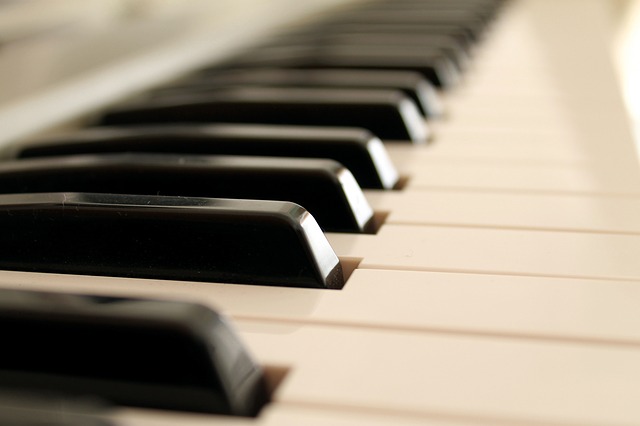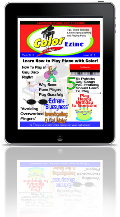The Shortcut to Identifying Keys with Sharps in the Key Signature: In a previous post we covered the shortcut on how to identify keys with flats in the key signature. Now we’re going to cover the Shortcut to Identifying Keys with Sharps in the Key Signature. 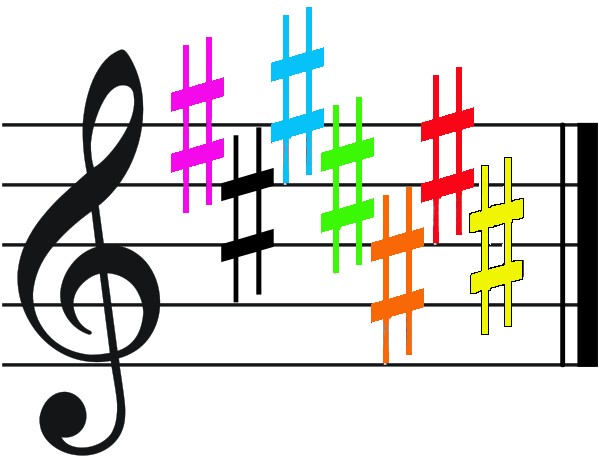
I don’t want to be redundant but I do want to recap some of the things that I said in that last post because they are relevant and important. We’re talking about identifying keys with sharps in the key signature.
Sharps and flats in key signatures aren’t random. They appear in the same order every time. For example, if you have two sharps in the key signature, they’re always F sharp and and c sharp in that order. Most piano students are taught to remember the keys of key signatures by rote. That is, by just memorizing them. That’s the traditional way.
I know that there are a few creative traditional teachers out there that break from the norm and embrace new ways of teaching. But it’s difficult to break away from tradition. Many traditional teachers continue to teach the same old way.
Sharps and flats are never mixed together in the same key signature. As I mentioned in the shortcuts for the flats in key signatures post, there’s a lot of musicians who refer to flats and sharps together within the same piece of music. This is pretty confusing and even though I understand what notes they’re referring to when they do this, I also know that it can make an aspiring musicians life more difficult because of that confusion.
Make sure that you also know the order of sharps and the order of flats in key signatures. It’s not difficult and it’s actually something that should precede learning the shortcut to identifying sharps in key signatures.
I’m not enthusiastic about sight reading in the traditional sense, but I also use and teach piano playing with lead sheets. In case you’re not familiar with those, they’re actually a skeleton of any song or piece of music with just a simple melody line and chord symbols.
When you have some proficiency and skill level with lead sheets, you can play a lot of notes without reading a lot of notes. But like traditional written music, they’re published in all keys. That’s where mastering key signatures will help you. It’s not difficult. You just need to take the time to do it.
I want to share with you today the shortcut to identifying keys with sharps in the key signature.
So here it is:
Let’s first start with a key signature that has only one sharp.
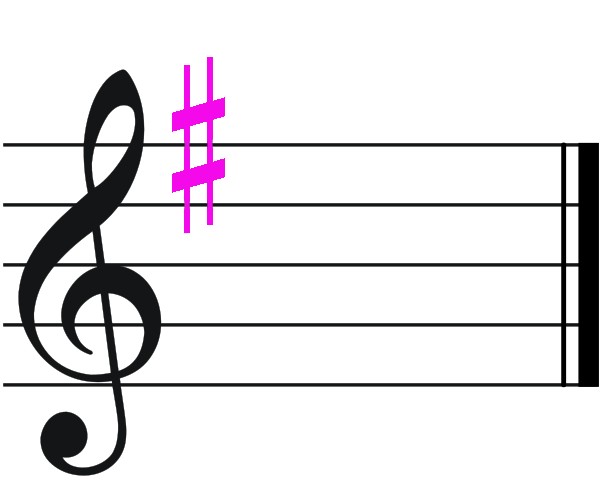
Find the very last sharp in the key signature and move up a note (to the right) one half step and that will be the key you’re in.
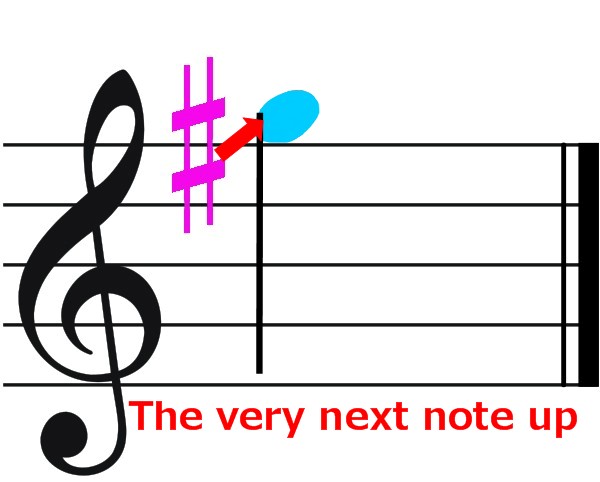
In this example you’re in the key of G Major.
If you have two sharps in the key signature, they’ll be F sharp and c sharp. Read the earlier post on the order of sharps to get up to speed if you’re not familiar with them.
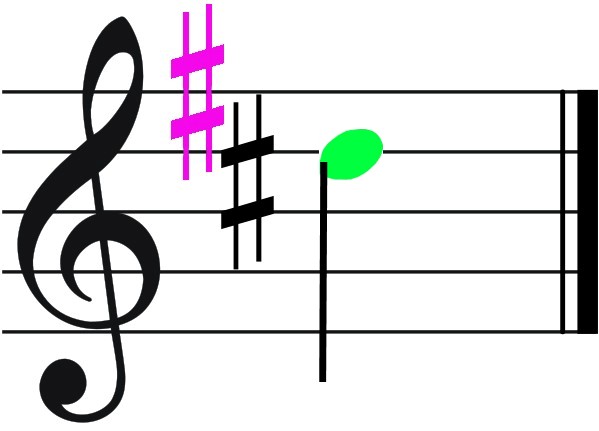
The last sharp is C sharp so the very next note one half step above it is D. So you’re in the key of D Major.
Here’s F sharp, C sharp, and G sharp.
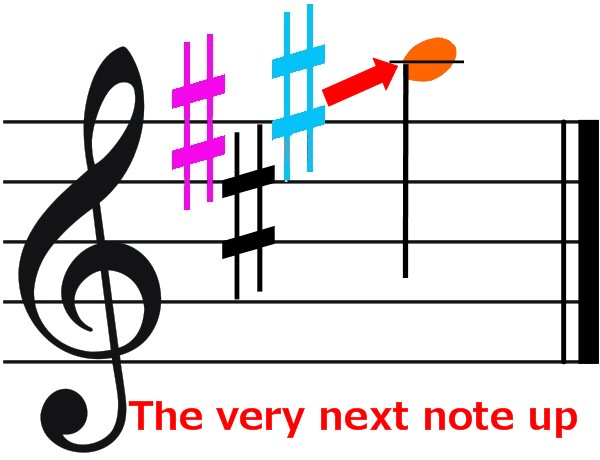
The last Sharp is G sharp. The note a half step up is A. So the key is A Major.
Now try it for yourself.
Here’s F sharp, C sharp, G sharp and D Sharp.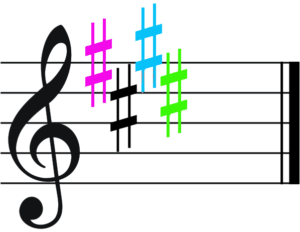 What key are you in with four sharps?
What key are you in with four sharps?
Absolutely correct! It’s E Major. It’s the very next note to the right of the last sharp.
What key are you in with five sharps? F sharp, C sharp, G sharp, D sharp and A sharp.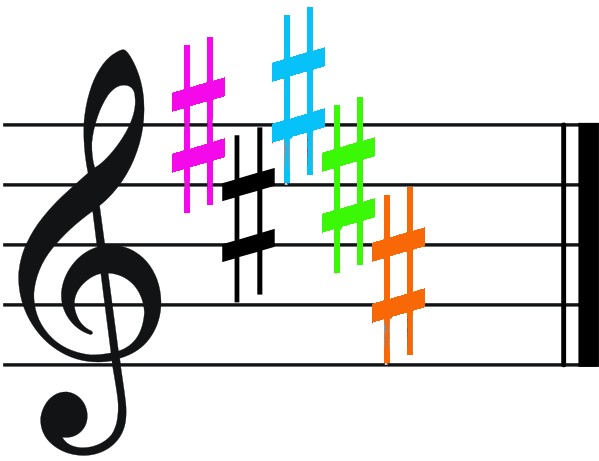
Absolutely correct! B Major!
What key are you in with these six sharps?
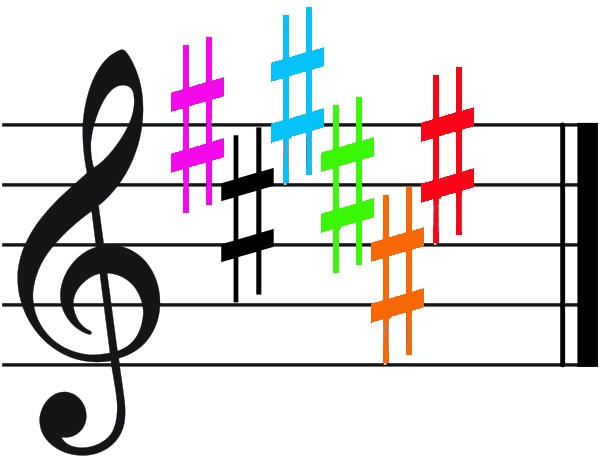
That’s right! F sharp.
Ok, here’s the last Major key of music that you could be in with sharps. You have 7 sharps. What Major key are you in? Right Again! C sharp Major.
Right Again! C sharp Major.
As I mentioned in the Shortcut to Identifying Keys with flats in the Key Signature article, this is just a simple shortcut when you’re not familiar enough to recognize them at first glance.
When you become more engaged and familiar with playing lead sheets and chord charts, you’ll know them without having to use this shortcut. And it’s also good to have as a reference when you come across a particular key that you have played in for a while.
As I mentioned before, you can master this shortcut with just a little repetition in a very short time. Don’t put if off. Go through your key signatures and get this very simple skill under you belt so you can go up to the next level in you piano playing.
Even better let me send you a free instructional guide that has some very simple repetitions to help you learn your key signatures very fast. Just click here and I’ll send it to you instantly.
It’s a free resource and my gift to you for reading this article.
Find out more about Color Score! The easiest way to learn to play the piano like a professional.
Until next time, Go Play!
Greg Lee
Latest posts by Greg Lee (see all)
- What is a minor/Major 7 Chord? - October 26, 2023
- 7 Chord Substitutions that Professionals Use - October 19, 2023
- 5 Simple Chord Tricks to Sound Amazing - October 5, 2023

